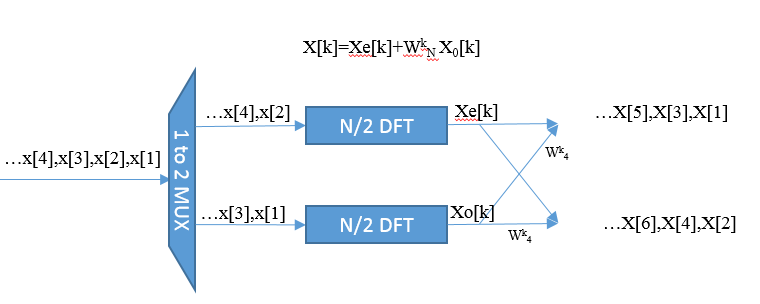From searching online I found this:
The apparatus consists of two sets of bulbs. The first set of three bulbs is filled with solution to half of their capacity and second set of another three bulbs is filled with the pure solvent. Each set is separately weighed accurately. Both sets are connected to each other and then with the accurately weighed set of guard tubes filled with anhydrous calcium chloride or some other dehydrating agents like $\displaystyle P_2O_5$, conc. $\displaystyle H_2SO_4$ etc. The bulbs of solution and pure solvent are kept in a thermostat maintained at a constant temperature.
A current of pure dry air is bubbled through. The air gets saturated with the vapours in each set of bulbs. The air takes up an amount of vapours proportional to the vapour pressure of the solution first and then it takes up more amount of vapours from the solvent which is proportional to the difference in the vapour pressure of the solvent and the vapour pressure of solution, i.e. $\displaystyle p_0 – p_s$. The two sets of bulbs are weighed again. The guard tubes are also weighed.
Loss in mass in the solution bulbs $\displaystyle \propto p_s $
Loss in mass in the solvent bulbs $\displaystyle \propto (p_0 – p_s) $
Total loss in both sets of bulbs $\displaystyle \propto [p_s +(p_0 – p_s)] \propto p_0 $
Total loss in mass of both sets of bulbs is equal to gain in mass of guard tubes.
Thus, $\displaystyle \frac{p_0-p_s}{p_0} = \frac{\text{Loss in mass in solvent bulbs}}{\text{Total loss in mass in both sets of bulbs}} = \frac{\text{Loss in mass in solvents bulbs}}{\text{Gain in mass of guard tubes}}$
Further we know from Raoult’s law
$\displaystyle \frac{p_0-p_s}{p_0} = \frac{\frac{w_A}{m_A}}{\frac{w_A}{m_A} + \frac{w_B}{m_B}}$
The above relationship is used for calculation of molecular masses of non-volatile solutes.
For very dilute solutions, the following relationship can be applied.
$\displaystyle \frac{p_0-p_s}{p_0} = \frac{\text{Loss in mass of solvent bulbs}}{\text{Gain in mass of guard tubes}}= \frac{w_Am_B}{w_Bm_A}$
My questions:
- Why "The air takes up an amount of vapours proportional to the vapour pressure of the solution first and then it takes up more amount of vapours from the solvent which is proportional to the difference in the vapour pressure of the solvent and the vapour pressure of solution"?
- How can we add $\propto p_s$ and $\propto p_0-p_s$ when we don't know what the proportionality constants are or even if they are equal?
- It would be better if you could explain in detail the process because I'm not getting it properly from here.For your information the text after "From Raoult's Law" and about "the setup" is purely clear to me.
Answer
The additional question from the comments:
Why [is] the amt. of vapours taken up proportional to vapour press. Why directly proportional? Why not nothing else?
First things first, let's get a definition (Wikipedia, italics added):
Vapor pressure [...] is defined as the pressure exerted by a vapor in thermodynamic equilibrium with its condensed phases (solid or liquid) at a given temperature in a closed system.
So basically, before you start the experiment (see below) the vapors have already formed, meaning that thermodynamic equilibrium has been achieved. Then you start bubbling through dry gas, which then mixes with the vapor gas already in the bubbles. If you set the gas flow appropriately, you get a near-equilibrium situation (see the graphic below) and the gas that exits the bulb assemply has exactly the same amount of vapor in it as the vapor "layer" (which can not be thought of as a layer anymore because of the bubbling) above the liquid surface.
We do not have an equilibrium situation, which is why so much care has to be taken that we get as close as possible to the equilibrium situation. (Also, we do not have a closed system, so everything starts to get slightly problematic at this point. But to a first degree of approximation, this will hold up fine.)
This is also why it is directly proportional to the vapor pressure: There is no other mechanism that moves solvent molecules from the condensed phase to the vapor phase. Of course you could add a supersonic vibrating membrane and force more solvent molecules into a vapor phase, but that is not what you want to do, because you want to quantify the relative lowering of the vapor pressure.
Why "The air takes up an amount of vapours proportional to the vapour pressure of the solution first and then it takes up more amount of vapours from the solvent which is proportional to the difference in the vapour pressure of the solvent and the vapour pressure of solution"?
I guess the question you really want to ask is: Why is the vapor pressure of a solution lower than the vapor pressure of a pure substance?
The answer is not simple, but the explanation of the vapor pressure lowering effect can be given by assuming a simple model: Imagine that in the solution, there are two types of molecules; the solvent and the solute. In the pure solvent, there is only one kind. Statistically speaking, that means that there is also a smaller amount of solvent molecules at the boundary between the bulk phase and the vapor. Since solute molecules don't go over into the vapor, there is a smaller area of solvent molecules that can go over into the vapor, which means that the vapor pressure of the solution is smaller when compared to the pure solvent.
How can we add $\propto p_s$ and $\propto p_0−p_s$ when we don't know what the proportionality constants are or even if they are equal?
While we don't know the magnitude of the proportionality constants, we know that they are equal. The proportionality constant is most likely dependent on ambient pressure, temperature and flow rate of the gas. These three variables are being controlled during the experiment and kept constant for all glass bulbs. (Well, I don't know about keeping ambient pressure constant. But if you perform the experiment fast enough, that shouldn't pose much of a problem.)
It would be better if you could explain in detail the process because I'm not getting it properly from here.
Why do we do this?
First, we have to remember: Why are we doing this process; what do we want to find out? The answer is: We want to quantify the relative lowering of the vapor pressure.
How do we do this?
Here's what happens during the process:
- Dry gas arrives at the first set of bulbs, filled with a solution.
- The dry gas gets saturated with solvent vapor.
- The solvent-vapor-saturated gas arrives at the second set of bulbs which contain the pure solvent.
- Because of the vapor pressure lowering effect (here now applied in reverse) the vapor pressure of the pure solvent is higher. As such, the gas that enters is not saturated. When it exits the second set of bulbs, it is saturated again.
- The pure-solvent-saturated gas enters the desiccator and loses all solvent vapor to it.
- Dry gas exits the apparatus.
This might still be hard to understand, so here a graphic that shows you what happens to the solvent vapor partial pressure in the gas:

At time 1 the gas enters the first bulb. It exits the first cluster of bulbs at about time 4. Then it travels to the next cluster of bulbs (containing the pure solvent) and loads up there, up until time 8. At time 9 the gas enters the desiccator where it loses all the solvent vapor and exits dry at time 12.
Since we weigh all components, we know exactly how much mass we lost from solution and solvent, and how much mass the desiccant gained (both those numbers [the total of the mass loss of course] should be equal): $$ \Delta m_\text{solution} + \Delta m_\text{solvent} = \Delta m_\text{desicc.} $$
The following proportionalities hold:
- $ \Delta m_\text{solution} \propto p_s $
- $ \Delta m_\text{solvent} \propto (p - p_s) $
- $ \Delta m_\text{desicc.} \propto p $
The relative lowering of the vapor pressure can now be calculated, it is simply $$ \frac{p-p_s}{p} = 1 - \frac{p_s}{p}$$
If you know the vapor pressure of the pure solvent, you can simply plug it in the equation, get the proportionality constant and from that calculate the vapor pressure of the solution.
In conclusion, I can only say that I hope to have clarified things for you. I myself spent quite some time researching this method, as I have never heard of this question before. Thank you for the opportunity!



 I wrote this script to get those plots:
I wrote this script to get those plots:







